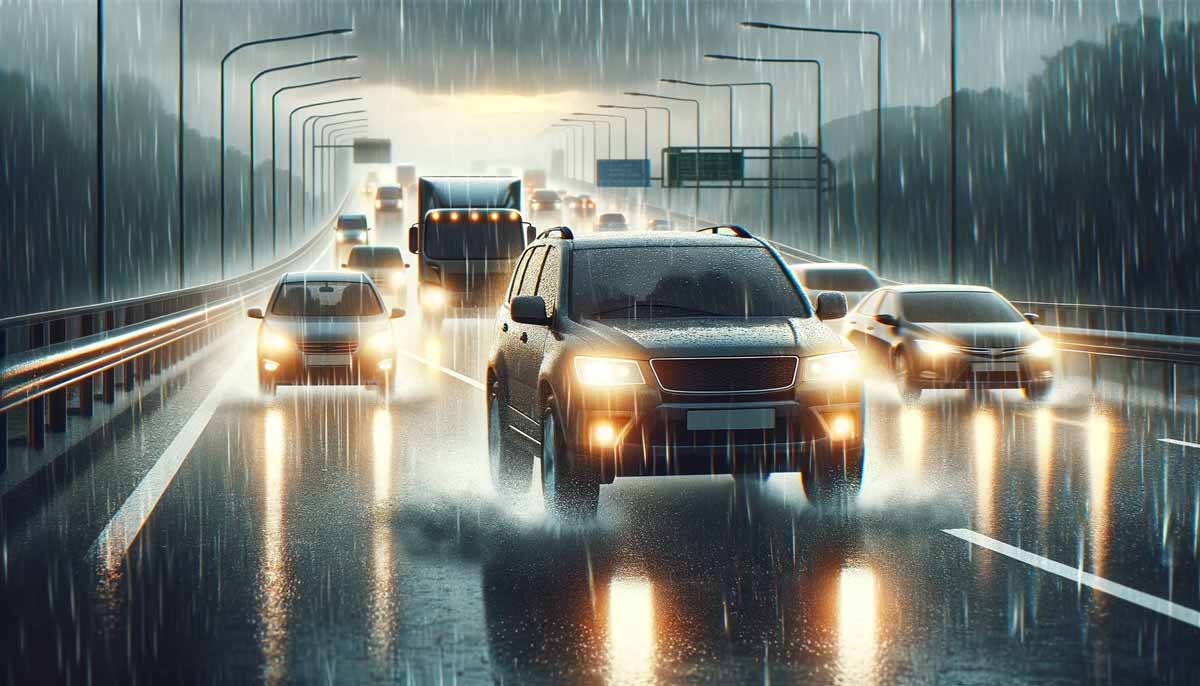In the ever-changing climate of Sonoma County, driving in rainy weather has become a common yet challenging experience for many drivers. This article aims to provide “Rainy Weather Driving Tips,” ensuring you stay safe on the road. We’ll cover key strategies from pre-trip preparations to post-journey checks. By the end of this read, you’ll have a toolbox of solutions for a safer drive during the rains, even before considering calling an expert.
| Topic | Key Points |
|---|---|
| Preparing for Rainy Weather | Vehicle checkup, Tire tread, Lights, Wipers |
| Driving Techniques in the Rain | Speed control, Distance maintenance, Hydroplaning prevention |
| Post-Rainy Drive Maintenance | Inspection, Repair needs, and professional assistance |
As we delve into the essential pre-trip checks, remember that the journey to safer rainy weather driving begins long before you hit the road.
Preparing Your Vehicle for Rain
Before setting out in rainy conditions, a thorough vehicle check is crucial. Start with inspecting your tires. Ensure they have adequate tread depth, as worn-out tires significantly increase the risk of hydroplaning. Next, test your lights and windshield wipers; these are your first defense against reduced visibility. It’s also wise to check your brakes and steering systems, as these are critical to maintaining control during wet conditions.
- Tires: Tread depth and pressure
- Lights: Functionality for visibility
- Wipers: Efficiency in clearing the windshield
- Brakes and steering: Check for optimal performance
By ensuring these components are in top condition, you significantly enhance your safety in rainy weather. Next, let’s explore the driving techniques that can further ensure a safe journey.
Driving Safely in Rainy Weather
Navigating the roads during rainy weather demands a heightened sense of awareness and a shift in driving techniques. The key is not only to adapt to the decreased visibility and wet conditions but also to anticipate potential hazards. Here’s a detailed guide to help you drive more safely in the rain:
- Reduce Speed and Maintain Focus: Start by reducing your speed; wet roads can drastically affect tire traction, increasing the risk of accidents. Stay focused and avoid distractions like mobile phones or overly loud music.
- Keep a Safe Following Distance: Increase the distance between your vehicle and the one ahead. In dry conditions, a 3-second rule is standard; in the rain, extend this to at least 5 seconds to allow for longer braking distances.
- Beware of Hydroplaning: Hydroplaning occurs when your tires lose contact with the road surface and ride on a layer of water. If this happens, gently lift your foot off the accelerator and steer straight until you regain control. Avoid harsh braking or sudden steering movements.
- Use Your Headlights: Turn on your headlights, even in light rain or overcast conditions, to enhance your vehicle’s visibility to other drivers.
- Windshield Fogging: Use your air conditioning to prevent the windshield from fogging up, which can further hinder visibility. If your vehicle doesn’t have air conditioning, keep a clean cloth handy to wipe the windshield.
- Avoid Standing Water: Drive around places where water has collected, if possible. Driving through deep water can lead to brake malfunction or, in extreme cases, engine flooding.
- Brake Early and Gently: Apply the brakes earlier than you would in dry conditions and increase your stopping distance. This not only keeps you safer but also signals to drivers behind you to slow down.
- Steer and Maneuver Gently: Sudden turns or movements can lead to skidding. Make smooth, gentle steering adjustments.
- Stay in Your Lane: Changing lanes increases your chance of hitting a puddle or losing traction. Stick to your lane and avoid unnecessary lane changes.
- Be Aware of Your Surroundings: Watch out for pedestrians, cyclists, and motorcyclists. Rain makes it difficult for them to see and be seen.
- Prepare for Emergencies: Always carry an emergency kit in your car, including items like a flashlight, first aid kit, blankets, and some basic tools.
By following these steps, you can significantly reduce the risks associated with driving in rainy weather. Remember, safety starts with you. Stay alert, drive cautiously, and respect the challenging conditions.
Post-Rainy Drive Vehicle Maintenance
After driving in the rain, it’s important to inspect your vehicle for any potential damage. Check for any issues, like body damage or undercarriage problems, that might have occurred during your journey. If you notice any anomalies, such as unusual noises or handling difficulties, it may be time to visit an auto body repair shop. Regular maintenance checks, especially after exposure to harsh conditions, can extend the life of your vehicle and ensure your safety on the road.
- Visual inspection: Look for any external damage
- Performance check: Listen for unusual noises or handling issues
- Professional assistance: Seek help for any detected problems
Taking these post-drive steps can help you address minor issues before they escalate into major concerns.
Ensuring Continued Safety and Vehicle Integrity
To sum up, navigating through rainy weather safely involves a combination of thorough preparation, adaptive driving techniques, and diligent post-drive maintenance. By following these “Rainy Weather Driving Tips,” you can minimize risks and ensure a safer journey. Remember, your vehicle’s condition plays a pivotal role in your safety on the road.
As we conclude, if you have any questions or need professional assistance, whether it’s for collision repair or just general maintenance, don’t hesitate to contact Downtown Collision in Santa Rosa, CA. Our experts are always ready to provide the support you need to keep your vehicle in top condition, rain or shine.

